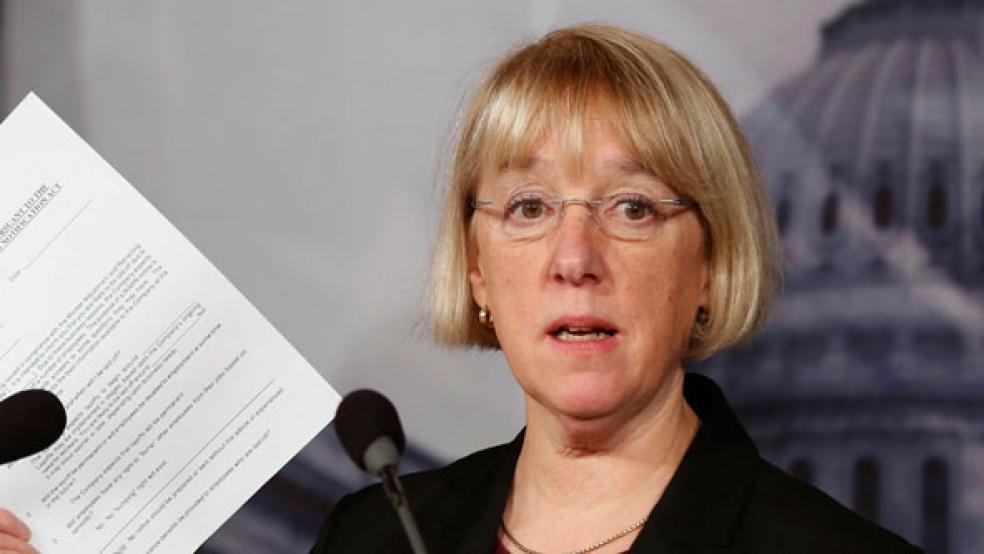The release of the Senate Democratic budget Wednesday afternoon initiated another bruising battle over the economy – pitting the long-standing Republican policies of cutting the Federal budget against renewed efforts by Democrats and the Obama administration for additional government stimulus.
Republicans are betting that a restless public will cheer their call for a balanced budget in ten years and a dismantling of President Obama’s signature achievements in health care and financial reforms. Democrats are gambling they can sell a more complex approach of strategic program cuts, $1 trillion of additional new tax revenues over 10 years, and increased domestic spending to provide another boost to the economic recovery.

After Obama held a 90-minute meeting with House Republicans yesterday afternoon, Speaker John Boehner complimented the back-and-forth as a “very frank and candid exchange of ideas.” But the Ohio congressmen went on to say that the president does not want to balance the budget, solve long-term debt problems or tap into the country’s energy resources.
Obama offered reporters a vague assessment as he left the basement conference room at the U.S. Capitol and returned to his awaiting motorcade. “It was good, I enjoyed it, it was useful,” he said.
In a sense, both parties are trying to convince the country that they have the best vision for an economy that has finally begun to show some signs of accelerating improvement. But past winter rallies have petered out with the start of spring, keeping a full-blown resurgence at bay.
The nation added 236,000 jobs in February as the unemployment rate ticked down to 7.7 percent, its lowest level since 2008. Home sales are rebounding and the stock market is on a bull run. All of this has come despite the political gridlock in Washington and uncertainty about the effects of the $85 billion sequester cuts in government that began to take effect earlier this month.
These developments are either evidence of a new found economic resiliency or show how much could be lost by another partisan breakdown – such as a failure by Congress and Obama to agree on a continuing resolution to keep the government operating beyond a March 27 deadline or raising the debt ceiling in May.
Should the recovery gain steam, the urgency for the Democratic proposals could start to evaporate. The Democrats’ new budget – the first they have promulgated in nearly four years -- calls for $100 billion of fresh economic stimulus initiatives for job training and repair to roads, bridges and school, projects that they say they would be easily paid for by ending tax loopholes that largely benefit the rich and corporations. Their estimates assume $1 trillion in new revenues from weeding out those loopholes in the federal tax code.
“Millions of workers continue struggling to get back on the job; middle class families are still having trouble keeping their heads above water; and we have some very serious challenges when it comes to our medium and long-term deficit and debt challenge,” said Sen. Patty Murray, D-Wash., the new chairman of the Senate Budget Committee, in outlining her proposal.
The Democratic budget is designed to achieve $1.8 trillion of additional deficit reduction in the coming decade, on top of the $2.4 trillion previously agreed to by Congress and the White House. About $500 billion of those savings would be cuts in health care and other domestic programs; $240 billion in defense savings; and $242 billion from savings on interest payments on the debt. The remaining $975 billion of deficit reduction would come from closing unspecified tax breaks and loopholes in the tax code.
Unlike the Republicans, the Democrats make no pretense of seeking a balanced budget in the near future, with many using the Keynesian argument that it is far more important at this time for the government to bolster job-generating projects and to assist the unemployed and poor than to eliminate the deficit. The Democratic budget would reduce the deficit below three percent of GDP by 2015 and keep it well below that level for the remainder of the ten-year window.
“The highest priority of our budget is to create the conditions for job creation, economic growth and prosperity built from the middle out, not the top down,” Murray said.
By contrast, Republican House Budget Committee Chairman Paul Ryan favors $4.6 trillion of long term spending cuts, eliminating Obama’s health care reform, overhauling and downsizing Medicare and Medicaid and cutting tax rates – even though many of these austerity measures could stifle an economic comeback. Despite the encouraging jobs report for February, the labor market is far weaker than it has been at similar points following previous recessions.
Ryan’s plan extends all of the new tax revenues from Obamacare and this year’s fiscal cliff deal yet chops hundreds of billions from federal spending each year. Ryan argued that balancing the budget in ten years is critical to putting the economy back on a “path to prosperity,” even though the markets have yet to register concern about the $16.6 trillion national debt.
Ryan would achieve his balanced budget goal by locking in the sequester’s savings and cutting spending by an additional $4.6 trillion through 2023.
About 40 percent of the additional reductions would come from dismantling Obamacare – a proposal that repeatedly has failed in Congress and would be vetoed by Obama if it made it to his desk. The Democratic-controlled Senate defeated the latest effort by conservatives to repeal the Affordable Care Act yesterday, by a vote of 52 to 45. Republicans would also convert Medicare to a voucher-style private health care plan for those currently 54 years or younger and slash spending on food stamps and other key elements of the social safety net. Many of his proposals were drawn from his previous budgets as Budget Committee chief.
“We think we owe the country a balanced budget,” Ryan told reporters Tuesday. “We think we owe the country solutions to the big problems that are plaguing our nation: a debt crisis on the horizon, a slow-growing economy, people trapped in poverty. We’re showing our answers.”
Ryan assumes the economic benefits of his budget will generate an additional $112 billion in new revenues over ten years relative to existing Congressional Budget Office projections, while the government would spend $75 billion less than now projected over that same period.
Murray stressed in her statement yesterday that her party rejects the heart of the Republican budget, particularly calls for unwinding Obama’s health care reforms and Medicaid expansion and converting Medicare to a voucher-style private health insurance program for future seniors.
“Everyone needs to be part of this solution, but the House Republican approach would shred the safety net that has offered a hand up to millions of families across America, including my own, and we reject that approach.”





